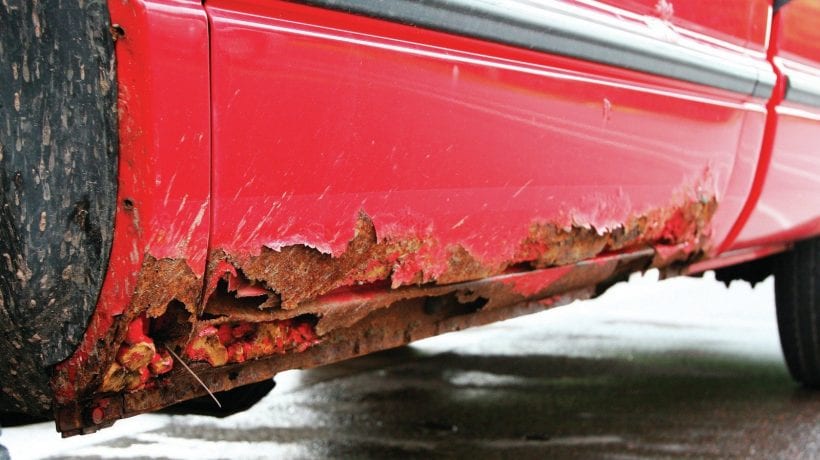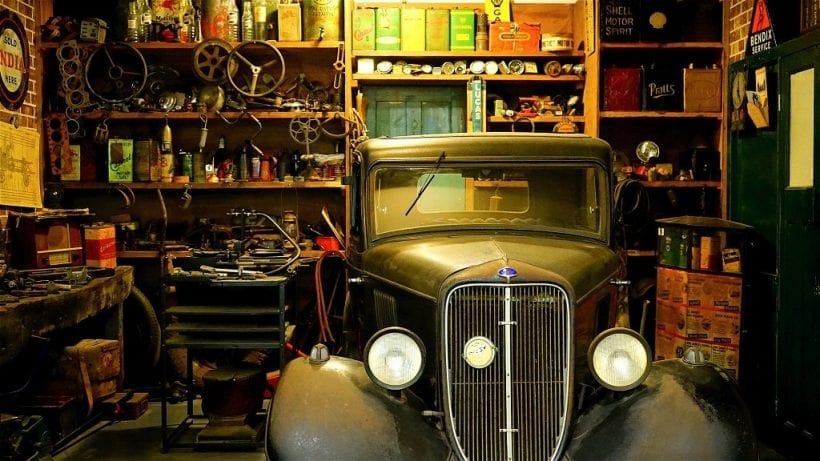For many, buying a used car can be a fantastic way to get a good car for a great price. If you don’t do your research, however, you could find yourself stuck with a car that has serious issues which can lead to expensive repairs that you will have to pay for if you want to keep driving.
On top of that, shopping for a used car online can save you quite a bit of time and energy. If you are planning on trusting online reviews and ads instead of heading to a nearby used dealership, here is a list of ten red flags to looks out for when you are going through all the online ads the internet has to offer. If a used car ad or review has any of the following red flags, you might want to reconsider shelling out the cash for the keys.

- A laundry list of recently repaired parts
Everyone who has tried to buy a used car online knows that you’re going to come across some cars that have a seemingly endless list of recently replaced parts and repairs. While the optimist in you may believe that the seller offering this list is a sign of goodwill and a sign that the car is in tip-top shape. The pessimist in you might also say that if there is a long list of things that have been repaired, there is an even longer list of items within the car that have yet to be fixed and that the seller has decided to cut their losses and get rid of the hunk of a chunk. While it might seem a little too negative, think about it: why would someone sell a car they just fixed up? This doesn’t have to be a deal-breaker, but it is certainly something to keep in mind.
- A Very Low Price
While low prices are one of the main reasons why people elect to pursue a used car over a new one, you have to know when a deal is too good to be true. Overly low prices should raise a red flag, and while some people do decide to sell perfectly fine cars for super-low prices due to a certain circumstance, that is certainly not the norm. Vehicles that are advertised with excessively low prices are too good to be true. That low price likely reflects a poor car condition. Chances are good that the seller is hoping that the low price will catch your attention first and convince you to buy a car that you otherwise should not.

- Seller declines a pre-purchase inspection
If a potential seller declines to go through this process during your conversations, this is most likely a sign that you should turn around and walk away. Don’t let them stall, don’t let them make excuses, and don’t let them convince you that everything is fine. If they don’t allow you to get the car get inspected before you purchase it, it is most likely a sign of a major underlying issue.
- A long list of previous owners
If a car works and is a breeze to maintain, chances are good that an owner won’t want to get rid of it. That’s why taking a look at just how many owners a car has had in the past is a good indication of whether or not it has struggled with recurring issues since it first left the lot.
According to Carplanet, the easiest way of finding out how many previous owners a potential vehicle that you want to buy has had to is to head to websites such as Carfax or Autocheck. If that car has had many previous owners, you would most likely be wise not to become the next owner.
- “It’s just a small fix’
If these words are uttered out of a seller’s mouth, you may very well want to turn and run the other way. If they tell you all that the car needs is a $30 to $100 fix to run like new, just turn around and offer to pay them the extra money so that they can get it fixed. If the seller is trying to get the better of you, you’ll see just how fast the excuses start.
Even if the seller isn’t downplaying the issue, something they are downplaying is the added cost when it comes to labor. Even a simple part like a head gasket can cost as cheap as $25. With the labor costs added to replace that kind of piece, however, can run you anywhere between $500 and $2000. You’ll feel quite foolish if a “quick fix” as they said leads to a quick
- “Surface Rust”

Rust can be part of the deal when it comes to buying a used car, and some rust can truly be nothing more than a forgivable aesthetic negative. Still though, it is something to be wary of, especially if the rust seems to have been untreated for a long time. The reason for that is because surface rust may very well be an indication of far more impactful rust along the frame, floorboards, fenders, and more. IF you’re noticing a little too much rust for you to be comfortable, don’t forget that you always have the option of walking away.
- Keep an eye out for mismatched paint
Mismatched paint is typically quite easily spotted on pictures – sometimes even more so than In person – so it is smart to keep an eye out for this when you come across a listing. While it is true that some discoloration can take place over time, especially on the bumper, big differences in the paint could indicate less-than-ideal previous repairs, a history of crash damage, or more. If you end up going to see the car in person, a good places to look for changes in paint are near shut lines and panel gaps.
- The ad has been up for a long time
While some sellers might leave their ads online well after selling a car, if a vehicle is still available and still online after a few weeks or months, it’s probably best to stay away. Either the vehicle is overpriced, which you should be able to figure out quickly by comparing it to similar used cars that are also for sale, or where is something wrong with the car that isn’t mentioned on the online ad.
- The title is not in the seller’s name
An important question to ask prior to going to check out the car in person is to make sure that the car’s title is in the seller’s name. If it isn’t the seller won’t be legally allowed to complete a transaction. This could be a sign that the car is stolen, but is actually more of a sign of a practice called curbside. This is when unlicensed individuals buy and flip used cars to make a profit rather than selling a properly maintained and repaired vehicle.
- Lack of vehicle repair history

While it is not necessarily a requirement for owners to keep service records handy, they should be easily accessible by calling or emailing shops where the car has been serviced in the past. A red flag should certainly go up if the seller cannot or does not produce a vehicle repair history when asked. This may signal that the vehicle’s repair was neglected, or that the owner has not had the car for a long time. You will want to avoid a car in either case. You will want to avoid a car in either case.

